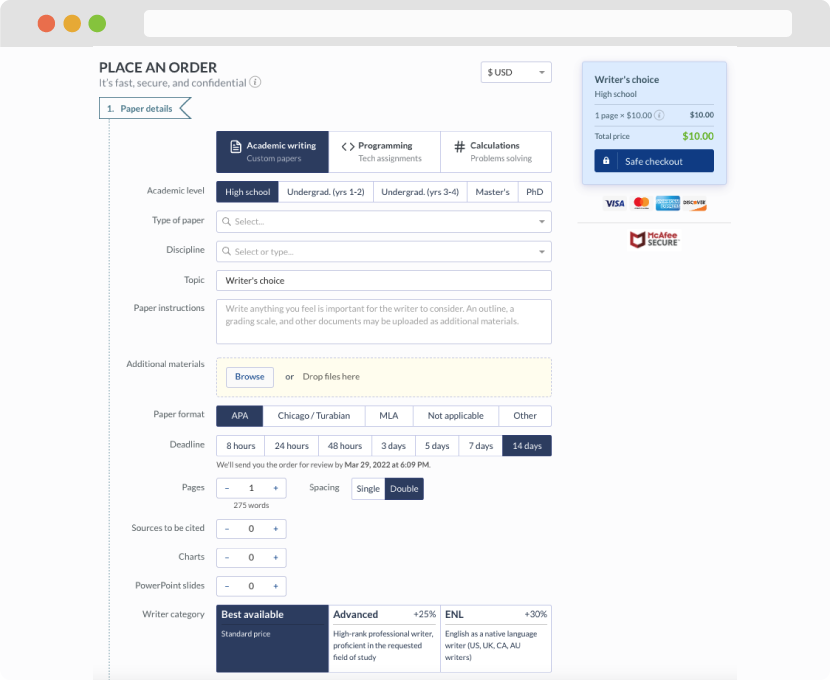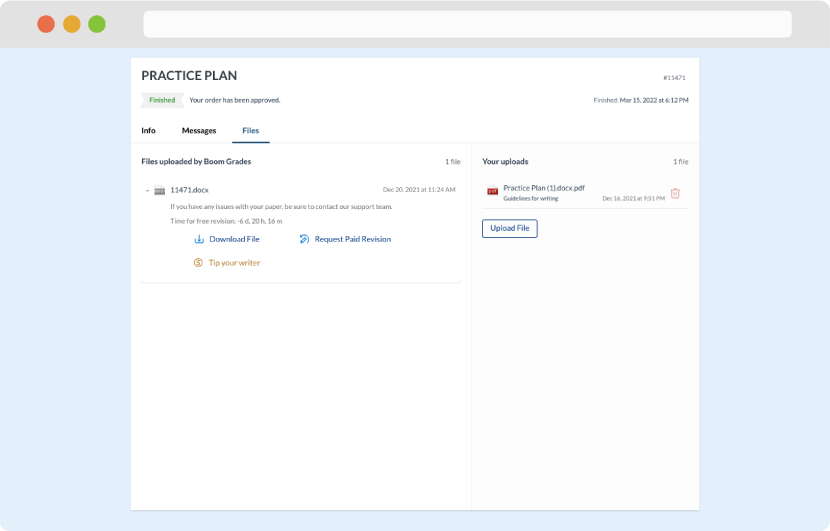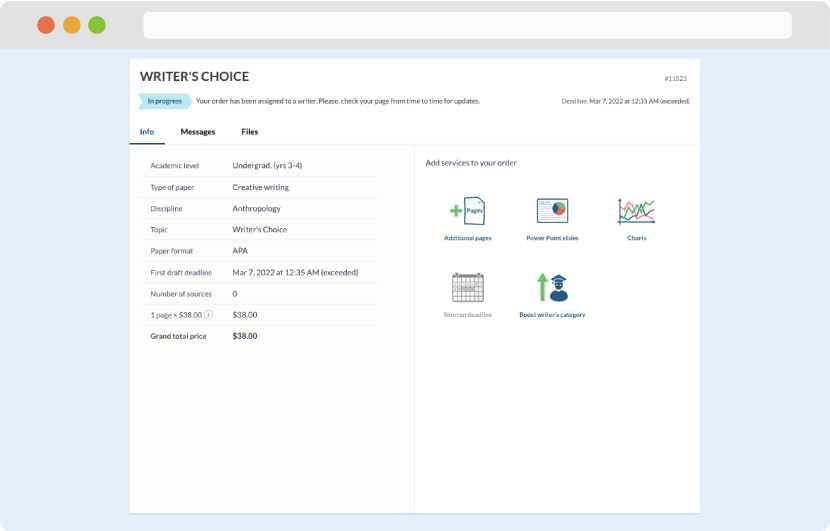1GRETSA UNIVERSITY
SCHOOL OF BUSINESS
REAL ESTATE MANAGEMENT
DISTANCE LEARNING STUDENTS’ TERM PAPER
COURSE CODE: DBFI 018 –
COURSE TITLE: REAL ESTATE FINANCE
Question One
Describe any five types of risks involved in the real estate market. [5 marks]
Question Two
Explain the current trends in Kenya’s real estate industry. [10 marks]
COURSE CODE: DBRM 015
COURSE TITLE: INTRODUCTION TO APPLIED VALUATION
COURSE CODE:DBMK 010
TITLE NTRODUCTION TO BUSINESS ETHICS
Question One
According to Kohlberg’s model of cognitive moral development, different people make
different decisions in similar ethical situations because they are in different stages of
mental(cognitive) moral development. Kohlberg proposed that individuals develop
through the following six stages. Discuss [10 marks]
Question Two
In Deontological theory, deontologists believe that individuals have some certain absolute
rights: discuss [10 marks]
Question Three
Write short notes on Teleological theories [10 marks]
DBRM 016: Introduction to Land Economics
Question 1: Examine the land use planning concept and its importance in sustainable
development. What are the key challenges and considerations in implementing effective
land use policies?
1.
Concept of Land Use Planning:
• Explanation: Land-use planning is designing and regulating land uses to meet socio-economic
and environmental needs, ensuring efficient and responsible utilization of land resources.
•
Importance: Aids in the sustainable management of land resources and prevents overuse
by ensuring appropriate distributions.
• Example: Zoning laws that separate land uses into residential, commercial, and industrial areas.
2. Sustainable Development:
• Explanation: Sustainable development is a development that answers to the human needs of the
present without compromising generations to come to meet their own needs (Tran et al., 2020).
Promotes economic growth while conserving natural resources for future use.
• Example: Mixed-use developments that help slow the rate of urban sprawl and preserve green
space.
3. Controlling Urban Sprawl:
• Explanation: Urban sprawl is the most excellent unlimited extension of urban land use on rural
land. Land use planning helps to contain sprawling by encouraging greater intensities of
development.
• Importance: This conserves agricultural land and reduces the environmental impacts of
increasing urbanization.
• Example: Establishing an urban growth boundary to restrain city growth.
4. Environmental Protection:
• Explanation: Effective land use planning juxtaposes environmental considerations, ensuring
that it retains and rests natural habitats and biodiversity.
• Importance: Ensures ecosystems remain healthy and can provide essential services such as
clean air and water.
• Example: Setting apart protected areas for the conservation of wildlife.
5. Economic Efficiency:
• Explanation: Land-use planning helps efficient land use by encouraging developments that
maximize economic benefits and minimize costs.
• Importance: Optimizes land resource allocation, thereby enhancing economic growth.
• Example: The development of transport hubs that will increase connectivity and economic
activity.
6. Public Participation:
•Explanation: Involving communities in planning ensures that land use policies reflect public
needs and preferences.
• Legitimacy: Increases the legitimacy and acceptance of land-use decisions.
• Example: Public hearings and community meetings regarding proposed development plans.
7. Infrastructural Development:
• Explanation: Coordinating land use planning with infrastructure development will ensure
essential services, be it transport, water, or electricity, among other things, are offered efficiently.
• Importance: Supports sustainable growth by ensuring infrastructure keeps pace with
development.
• Example: Planning public transport systems ensures everyone gets somewhere on time and
reduces congestion and pollution.
8. Regulatory Challenges:
• Explanation: Implementation of land use policies involves intricate regulations and
bureaucratic red tape, surpassing affordability in terms of both money and time.
• Importance: Ensuring regulation compliance is crucial for any adequate land-use plan.
• Example: Procuring all permits and approvals related to new development.
9.
Balancing Competing Interests:
• Explanation: Trends in land-use planning require a balance of various interests by parties such
as developers, residents, and environmental organizations.
•Importance: Ensures fair and equitable land use decisions.
•Example: Mediating conflicts between developers seeking to build and communities wanting to
preserve green spaces.
10. Adaping to Change:
• Flexibility: Land-use planning must respond to social, economic, and environment-related
conditions.
• Importance: Ensures long-term sustainability by making the possibility of adjustments in
response to new challenges.
• Example: Rezoning laws could be updated to reflect new housing demands or emerging
industries.
Question 2: Analyze the relationship between land economics and urbanization. How do
economic principles apply to the development and management of urban land? Provide
examples from different cities to illustrate your points.
1.
Supply and Demand:
• Explanation: The basis of land prices for urban areas is the fundamental economic principle of
supply and demand. Limited land with higher demand increases land prices.
• Impact: Urban land becomes more valuable as cities grow moderately in response to increased
demand.
•
Example: High demand in Manhattan, New York, increases land prices.
2. Land-use Efficiency
• Explanation: Efficient use of urban land means maximizing the economic benefit from the
available land through proper developmental strategies.
• Impact: This promotes economic growth and sustainability.
•Example – The vertical development of high-rises in Hong Kong is used to optimize space
further.
3.
Infrastructure Investment:
• Explanation: Transportation, utilities, and public service infrastructure, along with investment
within the urban systems, improve urban land, its attractions, and real estate values.
•
Impact: Enhances accessibility and supports urban growth.
•
Example: Expansion of the London Underground increasing property values along new
routes.
4. Zoning Regulations
• Explanation: Zoning laws involve land use and development density, so their overall influence
on urban land economics can regulate supply and dictate development patterns.
•
Impact: Influences property values and urban growth patterns.
• For instance, San Francisco zoning, where high-rise development is restricted to maintain the
local neighborhood’s character.
5. Property Taxes and Incentives :
• Explanation: Property taxation and development incentives are examples of economic policies
impacting urban land use decisions and investment.
•
Impact: Can either encourage or discourage development in certain areas.
• Example: The Detroit tax incentives aimed to rehabilitate blighted urban areas.
6. Market Speculation
• Explanation: Speculative investments in urban land can drive up prices, impacting affordability
and development.
•
Impact: This can lead to rapid price increases and potential market bubbles.
• Case in point: speculative buying in Dubai induces a boom in real estate that quickly turns into
a bust.
7. Public-Private Partnerships:
• Explanation: Public-private collaboration, risk, and benefits shared can drive urban
development projects.
• Impact: Facilitates large-scale urban projects and infrastructure betterment.
• Example: How the Canary Wharf area of London was redeveloped through private-public
cooperation.
8.
Externalities:
• Explanation: It is because the urban land development process can generate both positive and
negative externalities, such as traffic congestion or environmental degradation, affecting land
economics.
•
Impact: Requires regulation to manage adverse impacts and promote positive outcomes.
• Example: Urban green space mitigating the urban heat island effect, improving livability within
towns/cities.
9.
Globalization:
• Explanation: Global economic trends and foreign investments influence urban land markets and
drive demand and development.
• Impact: This can result in higher competition and increased land values.
•
An example would be foreign investment in Vancouver’s real estate market; it is the sole
force behind the driving up.
10.
Sustainable Development:
• Explanation: Principles of economic sustainability are oriented towards the long term and
incorporate concern for the environment and social issues in urban land development.
• Impact: Balances urban growth and ensures its sustainability.
• Example: Green spatial planning in Copenhagen’s urban planning and efficient public transport.
References
Tran, K., Neiswanger, W., Yoon, J., Zhang, Q., Xing, E., & Ulissi, Z. W. (2020). Methods for
comparing uncertainty quantifications for material property predictions. Machine
Learning: Science and Technology, 1(2), 025006.
DBRM 017: Introduction to Property Maintenance
Question 1: Discuss the importance of regular property maintenance in preserving
property value. What are the critical components of an effective property maintenance
plan?
1.
Preservation of Property Value:
• Explanation: As maintenance is regularly carried out, the property will be well maintained, thus
preserving its market value.
• Importance: It helps avoid depreciation and maintains attractiveness to potential buyers or
tenants.
•
Example: Regular roof inspections and repairs prevent leaks and costly damage.
2. Safety and Compliance:
• Explanation: Ensures the property meets safety standards and regulatory requirements.
Reduces liability and legal risks for property owners (Ammar et al., 2020)—regular fire alarm
and sprinkler system inspections to ensure compliance with fire safety regulations.
3. Tenant Satisfaction:
•
Explanation: Well-maintained properties attract and retain tenants.
•
Importance: Leads to higher occupancy rates and rental income.
• Example: HVAC systems are promptly repaired to ensure tenant comfort.
4. Preventive Maintenance:
•
Explanation: Identifying and addressing potential issues before they become significant
problems.
• Importance: Reduction in long-term repair costs and an extension to the life of property
components.
• Example: It involves seasonal checks over the heating and cooling systems to ensure they work
efficiently.
5. Routine Inspections:
• Regularly scheduled inspections to monitor the condition of the property.
•
Importance: Early detection of maintenance needs and prompt action.
• Example: Monthly walkthroughs to inspect for plumbing leaks or electrical issues.
6. Record Keeping:
• Explanations: Keeping detailed records of maintenance activities and repairs.
•
Importance: Makes one accountable and prepares for future maintenance.
• Example: Maintenance management software for tracking repair history.
7. Maintenance Budgeting:
•
Explanation: Allocating sufficient funds for ongoing maintenance activities.
•
Importance: Ensures resources are available for timely repairs and upkeep.
• Example: It sets aside a specified percentage of rent to the maintenance reserve fund.
8.
Vendor Management:
• Explanation: Building relationships with trustworthy contractors and service providers.
•Importance: Ensures high-quality maintenance work and timely response to issues. (Song et al.,
2021). A partnership with a reliable plumbing company for regular maintenance and emergency
repairs.
9. Emergency Preparedness:
•
Explanation: Plan to respond to natural disasters or significant system failures.
•
Importance: Minimizes damage and ensures quick recovery.
• Example: Developing a hurricane preparedness plan in case of an emergency.
10. Sustainability Initiatives:
• Explanation: The incorporation of sustainable practices into maintenance activities is to reduce
the impact on the environment.
• Importance: Enhances property value by promoting energy efficiency and sustainability.
• Example: Energy-efficient lighting and water-saving fittings should be installed.
Question 2: Evaluate the role of technology in modern property maintenance. How have
innovations such as smart home systems and predictive maintenance software changed the
property management landscape?
1.
Smart Home Systems:
• Explanation: Technology that allows remote monitoring and control of property features.
• Impact: This enhances security, energy management, and tenant convenience.
• Example: Smart thermostats adjust heating and cooling by sensing occupancy patterns.
2. Predictive Maintenance Software:
•
Explanation: Uses data and analytics to predict potential maintenance issues.
It provides an opportunity for proactive maintenance, reducing downtime and repair costs
(Alnabhi et al., 2020). Software that monitors HVAC performance and allows maintenance to be
scheduled before failures occur.
3. Energy Efficiency:
• Explanation: Intelligent systems and technologies that support monitoring and reducing energy
consumption.
•
Impact: Lowers utility costs and supports sustainability goals.
• Example: Smart meters provide real-time energy use information to optimize consumption.
4. Automated Work Order Systems:
• Explanation: Technology streamlining maintenance requests and management.
• Impact: Improves response times and tracking of maintenance tasks.
• Example: Mobile applications for placing a maintenance request and monitoring the progress
from the tenant side.
5.
Enhanced Security:
• Explanation: Advanced security systems could include smart locks, surveillance cameras, and
alarms.
•
Impact: Increases property safety and tenant peace of mind.
• Example: Smart locks with remote access control and monitoring.
6. IoT Devices:
• Explanation: A system of Internet of Things devices with real-time monitoring and alert
raising.
•
Impact: Enhances maintenance efficiency by detecting issues early.
• Example: Water leak detectors will alert the property manager upon leakage.
7. Virtual Inspectºons:
• Explanation: Conducting property inspections/assessments remotely using technology.
•Saves time and resources while maintaining property standards (Lammi, 2021). Drones doing
roof inspections, according to a press release, without physically having to be present.
8. Maintenance Management Software:
• Explanation: End-to-end platforms for planning, scheduling, and tracking maintenance
activities.
• Impact: Streamlines operations and improves the overall effectiveness of maintenance.
•
Example: Software platforms like Buildium or Propertyware.
9. Data Analytics:
• Description: Using data to inform maintenance and management decisions.
•
Impact: Optimizes maintenance schedules and resource allocation.
•
Example: Analyzing maintenance data to identify trends and prioritize tasks.
10.
Tenant Communication:
• Explanation: Technology improving communication between property managers and tenants.
• Impact: Enhance tenant satisfaction and engagement.
• Example: messaging platforms or apps for updates and notifications.
References
Alnabhi, H., Al-naamani, Y., Al-madhehagi, M., & Alhamzi, M. (2020). Enhanced security methods of
door locking based fingerprint. Int. J. Innov. Technol. Explore. Eng, 9(3), 1173-1178.
Ammar, M., Haleem, A., Javaid, M., Walia, R., & Bahl, S. (2021). Improving material quality
management and manufacturing organization systems through Industry 4.0 technologies.
Materials Today: Proceedings, pp. 45, 5089–5096.
Lammi, I. J. (2021). Automating to control: The unexpected consequences of modern automated work
delivery in practice. Organization, 28(1), 115–131.
Song, H., Zhu, N., Xue, R., He, J., Zhang, K., & Wang, J. (2021). Proof-of-contribution consensus
mechanism for blockchain and its application in intellectual property protection. Information
processing & management, 58(3), 102507.
Essay Writing Service Features
Our Experience
No matter how complex your assignment is, we can find the right professional for your specific task. Achiever Papers is an essay writing company that hires only the smartest minds to help you with your projects. Our expertise allows us to provide students with high-quality academic writing, editing & proofreading services.
Free Features
Free revision policy
$10Free bibliography & reference
$8Free title page
$8Free formatting
$8How Our Dissertation Writing Service Works

First, you will need to complete an order form. It's not difficult but, if anything is unclear, you may always chat with us so that we can guide you through it. On the order form, you will need to include some basic information concerning your order: subject, topic, number of pages, etc. We also encourage our clients to upload any relevant information or sources that will help.
Complete the order form
Once we have all the information and instructions that we need, we select the most suitable writer for your assignment. While everything seems to be clear, the writer, who has complete knowledge of the subject, may need clarification from you. It is at that point that you would receive a call or email from us.
Writer’s assignment
As soon as the writer has finished, it will be delivered both to the website and to your email address so that you will not miss it. If your deadline is close at hand, we will place a call to you to make sure that you receive the paper on time.
Completing the order and download